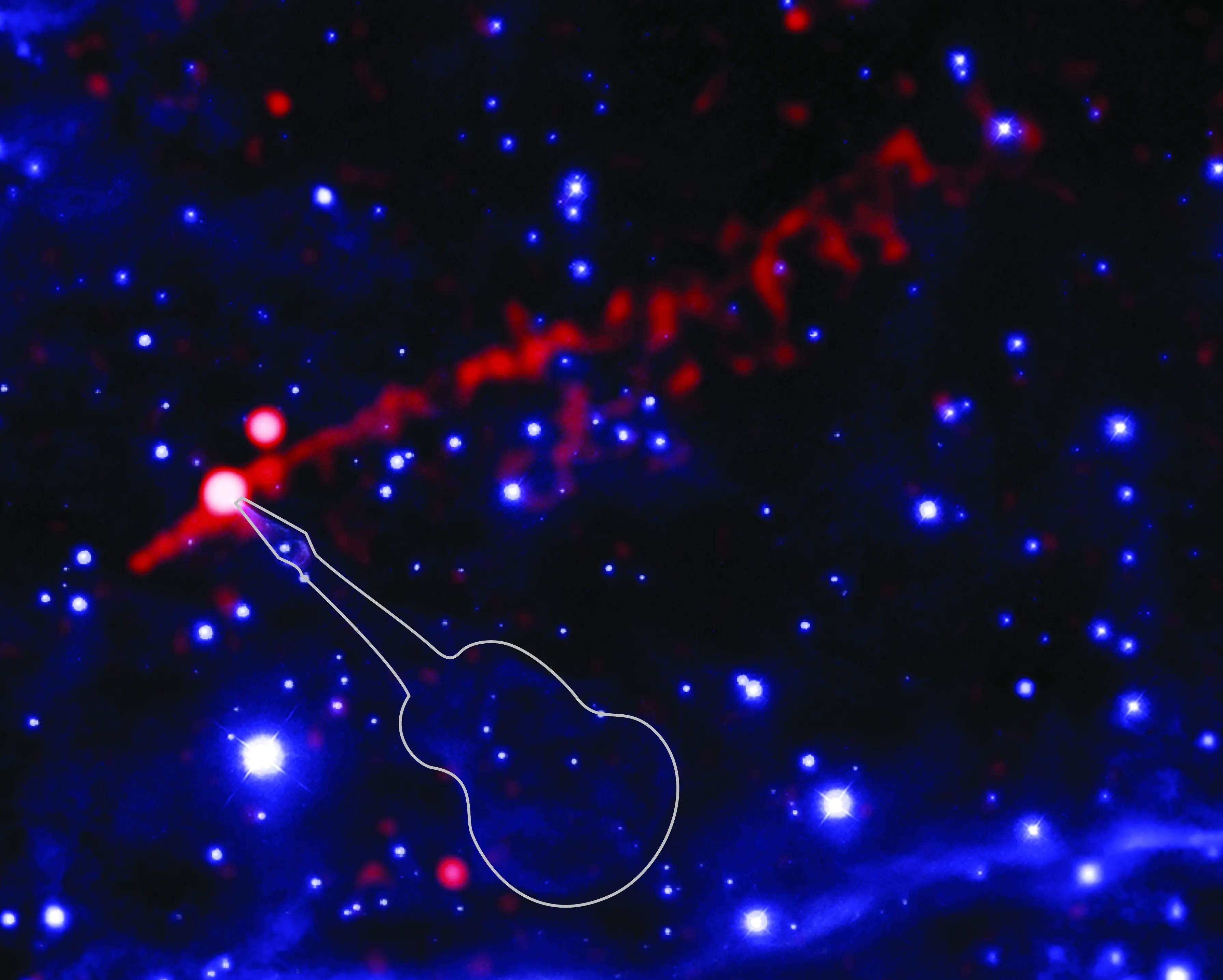21.11.2024
Normally found only in heavy metal bands or certain post-apocalyptic films, a “flame-throwing guitar” has now been spotted moving through space. Astronomers have captured movies of this extreme cosmic object using NASA’s Chandra X-ray Observatory and Hubble Space Telescope.
The new movie of Chandra (red) and Palomar (blue) data helps break down what is playing out in the Guitar Nebula. X-rays from Chandra show a filament of energetic matter and antimatter particles, about two light-years or 12 trillion miles long, blasting away from the pulsar (seen as the bright white dot connected to the filament).
Astronomers have nicknamed the structure connected to the pulsar PSR B2224+65 as the “Guitar Nebula” because of its distinct resemblance to the instrument in glowing hydrogen light. The guitar shape comes from bubbles blown by particles ejected from the pulsar through a steady wind. Because the pulsar is moving from the lower right to the upper left, most of the bubbles were created in the past as the pulsar moved through a medium with variations in density.

X-ray: NASA/CXC/Stanford Univ./M. de Vries et al.; Optical: (Hubble) NASA/ESA/STScI and (Palomar) Hale Telescope/Palomar/CalTech; Image Processing: NASA/CXC/SAO/L. Frattare
At the tip of the guitar is the pulsar, a rapidly rotating neutron star left behind after the collapse of a massive star. As it hurtles through space it is pumping out a flame-like filament of particles and X-ray light that astronomers have captured with Chandra.
How does space produce something so bizarre? The combination of two extremes — fast rotation and high magnetic fields of pulsars — leads to particle acceleration and high-energy radiation that creates matter and antimatter particles, as electron and positron pairs. In this situation, the usual process of converting mass into energy, famously determined by Albert Einstein’s E = mc2 equation, is reversed. Here, energy is being converted into mass to produce the particles.
Particles spiraling along magnetic field lines around the pulsar create the X-rays that Chandra detects. As the pulsar and its surrounding nebula of energetic particles have flown through space, they have collided with denser regions of gas. This allows the most energetic particles to escape the confines of the Guitar Nebula and fly to the right of the pulsar, creating the filament of X-rays. When those particles escape, they spiral around and flow along magnetic field lines in the interstellar medium, that is, the space in between stars.
The new movie shows the pulsar and the filament flying towards the upper left of the image through Chandra data taken in 2000, 2006, 2012 and 2021. The movie has the same optical image in each frame, so it does not show changes in parts of the “guitar.” A separate movie obtained with data from NASA’s Hubble Space Telescope (obtained in 1994, 2001, 2006, and 2021) shows the motion of the pulsar and the smaller structures around it.
A study of this data has concluded that the variations that drive the formation of bubbles in the hydrogen nebula, which forms the outline of the guitar, also control changes in how many particles escape to the right of the pulsar, causing subtle brightening and fading of the X-ray filament, like a cosmic blow torch shooting from the tip of the guitar.
The structure of the filament teaches astronomers about how electrons and positrons travel through the interstellar medium. It also provides an example of how this process is injecting electrons and positrons into the interstellar medium.
A paper describing these results was published in The Astrophysical Journal and is available here.
NASA’s Marshall Space Flight Center manages the Chandra program. The Smithsonian Astrophysical Observatory’s Chandra X-ray Center controls science operations from Cambridge, Massachusetts, and flight operations from Burlington, Massachusetts.
Quelle: NASA
